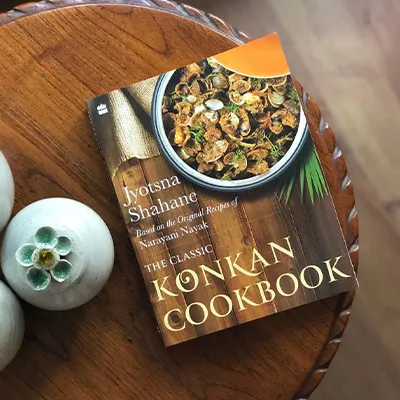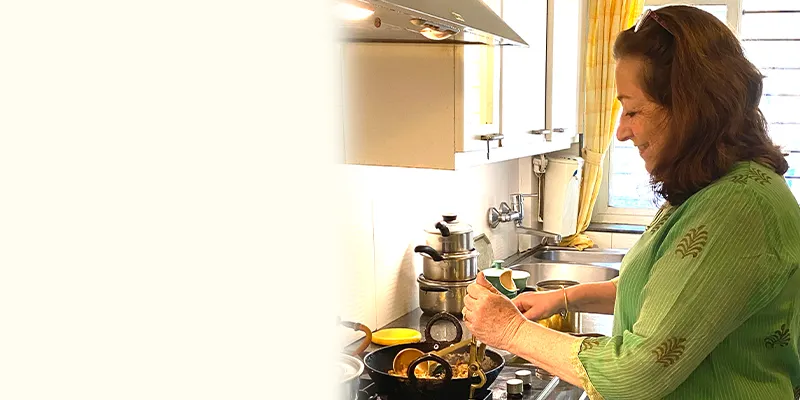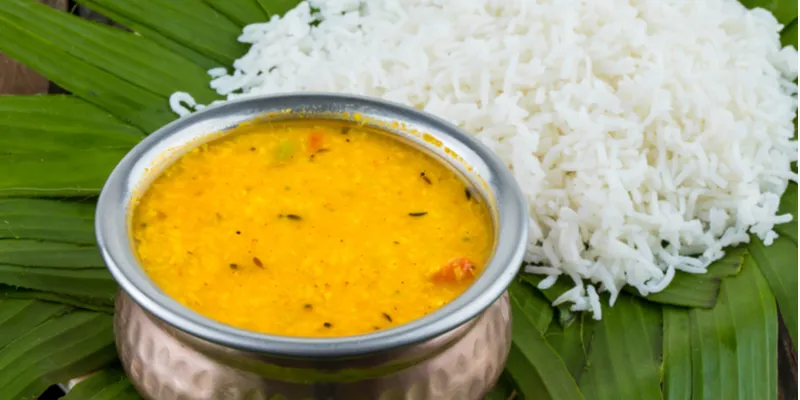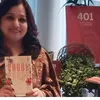Love spicy food? Try Konkan food this weekend
Cookery Craft, a cookbook by Narayani Nayak, could be found in most Konkan homes in the 50s. Now, a revised and rewritten edition with new recipes by Jyotsna Shahane is out. Here’s an interview with the author…
The beauty of Konkan food lies in the spices. Whether it is the fiery tirphal, purple kokum, ambade plums or tart green mangoes, the delicious blend of sweet, sour and piquant flavours make the dishes stand in a league of their own. Besides the wonderful mix of condiments, the region is also known for its palette of wonderful produce, like ash, snake and bitter gourds to golden pumpkins, Malabar spinach, fragrant amaranth and so much more.
In the 50s, one of the most popular cookbook writers in the Konkan region was by Narayani Nayak, who wrote a cookbook called Cookery Craft, which soon became a kitchen bible in the homes of many housewives and cookery enthusiasts in the area. Later, Narayani brought out a new edition of the book, called 500 Easy Recipes, which was also very popular among Konkani speaking people in the country.
Now, Pune-based food writer and filmmaker, Jyotsna Shahane, has revised and rewritten this cookbook to make it more contemporary and give it a new spectrum of readership. Her recently launched book, ‘The Classic Konkan Cookbook’ is a labour of love, in which she has meticulously tried out and curated recipes from Naryani's book and chosen the best among them, besides adding some new recipes too.
As a collector of old cookbooks and a food blogger, Jyotsna has always been interested in cuisines and food traditions. She is an alumnus of Film and Television Institute of India (FTII) and has created documentaries and non-feature films, but her love for unique cuisines has now drawn her into a new field, which she is passionate about.

Jyotsna Shahane
In an interview with YSWeekender, Jyotsna speaks about food, her fascination with Narayani’s work and the spices that make the food of this region so special...
Edited excerpts from the interview:
YSWeekender: Can you tell us about how you became interested in the work of cookbook author, Narayani Nayak?
Jyotsna Shahane: Years ago, I was a regular guest at a dear friend’s home, Nalini Rau. She and her mother cooked the most amazing vegetarian food from what, to me at the time, were the unlikeliest ingredients, like pea pods, cauliflower stalks, banana pith, and so on. I loved eating at Nalinama’s table.
Decades later I found many of these recipes and a host of other amazing details in an old, out-of-print book by Narayani Nayak. Copies of this book still existed in Konkani homes I visited and many people mourned the fact that the book was no longer available. This was where my journey to bring out a new and contemporary edition of the book began.

Jyotsana Shahane's cookbook was launched recently
YSW: How did you get interested in cooking and the culinary arts?
JS: I have always been interested in using multiple faculties in the creation of things. Cooking is one such activity, where mind, heart and hands are joined in producing something of joy. After a career as a film director in what was then only a man’s world, I felt it was time to concentrate on those traditionally feminine activities which brought me so much pleasure when I was young. I was interested in activities where the process was as important as the outcome. Cooking, besides embroidery, became a passion and I found I had embarked on a fascinating voyage of discovery.
I started cooking when I was seven years old, encouraged by the reception my dishes received. I used the illustrated recipes from a children’s cookbook, as it left me independent to do my own thing in the kitchen, without having to listen to instructions, something I have always hated to do.
As my mother is Dutch mother and my father is Maharashtrian, meal times were always a pleasure, as we usually enjoyed a Maharashtrian thali lunch and a continental dinner. My mother cooked both cuisines very authentically and so our taste buds could appreciate a wide range of flavours.
YSW: What is special about Konkani food? What are some of the key flavours and ingredients?
JS: Where in the world would you find such a broad palette of produce. These include greens, roots, tubers, fruit, herbs and spices. All the gourds, the snake, ash, bitter, teasel, ridge gourd, are well represented plus pumpkins and cucumbers. All these are indigenous vegetables unlike the “foreign” cauliflower, carrot and cabbage so common in the north Indian food and all the nightshades, tomato, bell peppers, aubergine and potato which were late entrants on the vegetable scene in India.
A massive range of beans such as the dolichos, wal, long beans, lablab and field beans, greens like amaranthus, Malabar spinach, Chakramarda (cassia leaves) and other uncommon semi-wild greens proliferate in the Konkan area are used in Konkan cuisine.
A host of souring agents like the bilimbi, ambade, coconut or toddy vinegars, kokum and green mango lend depth to all their curries, pickles and chutneys, not forgetting unusual spices like the tirphal (a type of Szechuan pepper) and a very wide range of chillies.
Most of these ingredients and flavours are unique to the Konkan region and cuisine.
YSW: What was the USP and the special elements in Narayani's cooking?
JS: Narayani wrote at a time when cookbooks were almost unknown in India when most women followed handwritten recipes penned by their mothers. These notes were also quite vague with ingredients mentioned but not quantities. It was expected that the real learning would take place at the family hearth.
There was Thangam Philips book Modern Cookery published in 1946 and Veeraswamy’s Indian Cookery published in the 1930s but the fact that The Dalda Cookbook was a best seller in 1949 tells you much about the dearth of published material at the time.
Narayani wrote methodically and in detail, making it simple to follow her recipes.
YSW: How did you go about reworking the recipes for this book? Did you have to tweak them much?

Jyotsna had to test each of the recipes meticulously
JS: When reading through the recipes, I realised that the book would be of some use if the quantities were translated into kilo and grams from seers and katoras and if some ingredients were reduced considerably (recipes called for 20 chillies!) The methods had to be tested and clarity introduced. Modern conveniences were incorporated to make the process of cooking a half hour task from the original half-day slog. I also shot all the photos for the book.
YSW: How did test each of your recipes?
JS: I began by making each and every dish in the book. Since there are 500 recipes this took a great deal of time. After culling out the best, I retested and rewrote the recipes which had now whittled down to 200. The third round of testing was done from the newly written recipes, by Konkani friends for authenticity of taste, and an American friend for method, to make sure my instructions were easy to follow for anyone in the world.
YSW: How have ways of cooking and eating changed today?
JS: In the olden days women in India spent a major part of their day in the kitchen. Their role in the family was very much that of the sole “carer” and “nurturer”. This meant having to produce three hot meals a day with a variety of tastes on a single thali. Thus salt, sour, hot, sweet and bitter flavours had to be represented in (different chutneys, kachumbers, dals and sabzi and other items) preparations besides the staples of rice or chapati/ bhakri.
Today a woman’s role has expanded to include work outside the home and they have become wage earners too. So there just isn’t enough time to make such elaborate meals anymore and thankfully we have changed our eating habits and simplified them. A meal can now be just two preparations accompanied by rice or chapati.
Ways of cooking have changed too. Grinding the wet masala is a minute’s work with the blender, coconut milk can be bought, masalas come ready made, as do a host of other labour-intensive constituents.

Information on cooking techniques have been added to the cookbook
YSW: What are some of the changes you have incorporated in your cookbook?
JS: I have added some essential cooking techniques. Weights and measures have been changed. Amounts have been tweaked, and alternatives have been added for those vegetables that are not so easily available. I have also added more meat, poultry and seafood recipes to show the variety cooked in Malvani, Konkani Muslim and Gomantak homes while retaining many of the popular Udupi and Saraswat recipes. All the recipes have more detailed instructions than in the original, to enable first time cooks to reproduce the flavours, as accurately as possible.
YSW: Among these recipes, which have been your favourite and why?
JS: I have to say I love the horse gram idli as it has so much more taste and a bit more heft than the ubiquitous rice idli. And I can’t ignore the Plantain Koot, a green banana preparation which retains its crunchiness as the masala paste is added after frying.
YSW: Which recipe do you make over and over again?
JS: Our family favourite is Bibbe Upkari, a cashew nut dish which is so delicious that it is served over and over again at our table.

The ultimate comfort food - Dal and rice
YSW: What is your ultimate comfort food?
JS: Dal and rice of course! – plus Jowari roti and butter.
YSW: What did you write about as a food blogger?
JS: My interest in food blogging began with a need to identify ingredients. Having travelled all over India and the world, it was a problem to finds the right word to ask for a particular ingredient in local markets. In Andhra Pradesh sweet potato is Ratnapurigadda, in Marathi Rathal, in Kannada Genasu and Konkani Kanang.
The Classic Konkan Cookbook had a glossary of ten languages in my original manuscript which we unfortunately had to cut down to 4 languages for reasons of space. It was an attempt to address this practical problem of identification in different states in India.
I also wrote about farming practices in Maharashtra a subject in which I have had an interest since my time as a TV producer for a UNDP project making programmes for farmers in Maharashtra. I got to understand first-hand how the food we eat depends so much on the break up and divisions of land in rural areas, why intensive farming can be so bad and how marginal farmers survive on their small plots of land.
I also found out how our food habits can adversely impact rural economies and how our food choices can make a difference. Social change, as related to food was another topic of interest to me. There was always plenty to write about on the blog!
YSW: According to you, what are some of the mistakes that Indian cooks make?
JS: The only mistake I can think of is that there is a tendency to overcook, over spice and mask the flavor of the main ingredient, whether it is spinach or mutton.
YSW: Can you give us 3 tips on cooking a dish well?
JS: * Start right: Choose the right pan. Cast iron kadais are wonderful for most dishes. Choose the freshest ingredients you can find. Cut your ingredients evenly so they cook evenly.
* Be patient when sautéing onions to form a base for curries. They should have practically melted before adding the spices.
* Use spices with a light hand. Some of the best recipes have just a pinch of one or two spices.
YSW: In your opinion, can anyone cook? Or is it an art that can only be learnt by very few people?
JS: Anyone can cook. All you need is the interest and a couple of tips. Following a good cookbook makes it so much easier of course. The ability to distinguish and combine flavours is not so simple however and to become a great cook you need a somewhat sophisticated palate, besides years of experience.
YSW: What are some of your other favourite cuisines? Which do you think is the hardest?
JS: This is a tough question. I generally love all kinds of food when travelling to different countries, each with its singular taste. So South Asian is a great favourite, Italia (not including pasta or pizza), Ethiopian and Middle Eastern food are perhaps my favourites.
I think the French take the top spot for “hardest to produce” cuisine.
YSW: What are your plans for the future, book-wise? Are you planning to work on any other cookbook or any other type of cuisine?
JS: I have two books on the cards now. One is a book on tribal food and subsistence cooking and the other is a novel, which I finally want to complete.









